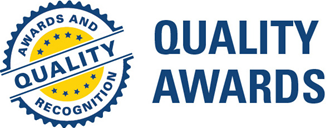

 Quality Awards
Quality Awards

Our experience in interventional fellowship training over the past decade has reinforced our strong feeling that procedural variety and volume are critical in providing a fellow with the tools he or she will need to succeed in independent practice. Working closely with a team of highly experienced board-certified faculty members, the fellow will become proficient in identifying appropriate candidates for invasive and interventional procedures. A thorough understanding of the indications, contraindications, and support in the literature and guidelines for when procedures are (or are not) indicated is critical, but it is our expectation that entering fellows should already be well-versed in these issues by the end of a general cardiology fellowship. There is no substitute for performing procedures in gaining the confidence and skill required for independent practice upon completion of training. Consequently, the focus of our fellowship training will be on performing the maximum possible number of relevant invasive procedures, with hands-on experience from the first day of fellowship.
Over the past 3 years, our fellows have performed on average:
Diagnostic left heart catheterizations: 650-750 per year (approximately 80% by radial access)
Percutaneous Coronary Interventions: 325-425 per year including 75-90 acute STEMI PCIs (approximately 85% by radial access)
Right Heart Catheterization: 35-55 per year
IVUS/OCT imaging: 130-175 per year
iFR/FFR/DFR: 70-105 per year
Orbital, rotational, or laser atherectomy or intracoronary lithotripsy: 40-65 per year
TAVR: 55-80 per year (97% trans-femoral; 2% trans-apical; 1% trans-carotid)
MitraClip: 6-8 per year
ASD/PFO closures: 5-9 per year
Alcohol Septal Ablation procedures for HOCM: 3-8 per year
Impella insertions: 8-12 per year
IABP insertions: 8-15 per year
Pericardiocentesis: 8-10 per year
Temporary Pacing Wire placements: 30-40 per year
Qualifying training in Peripheral Intervention is also available for fellows interested in going on to perform peripheral procedures upon completion of training.
The relative concentration of training in the above procedures is largely based on interests of the fellow. Procedure selection is at the discretion of the fellow. Emphasis on structural or peripheral interventions is feasible.
Although our network volume would permit the training of two fellows per year, we are committed to maximizing our trainee’s exposure to all available modalities without having to compete with a colleague for experience in less commonly performed procedures.
We comply with the ACGME’s requirements of one half day of clinic per week, but timing is flexible to minimize any compromise in time devoted to procedures.